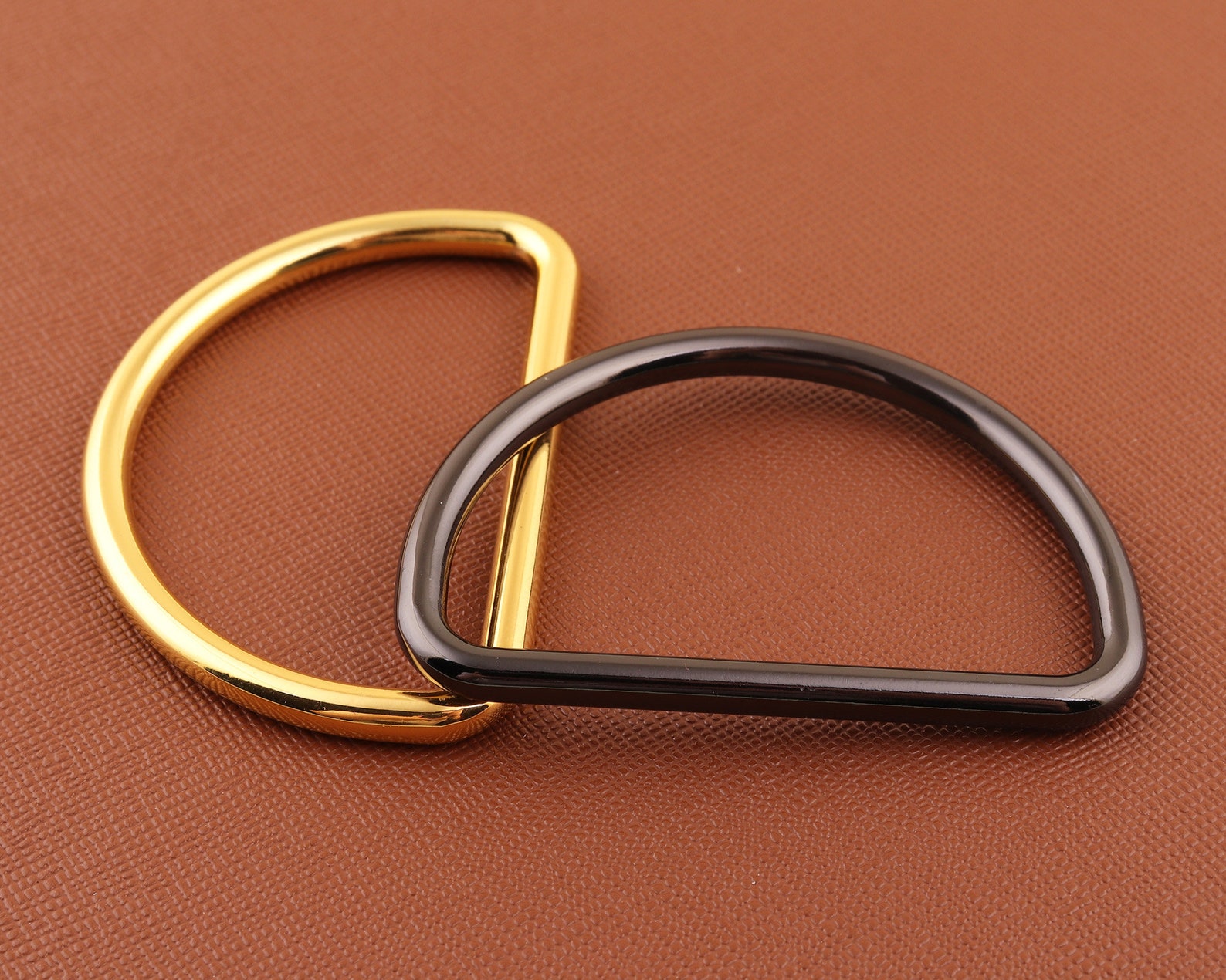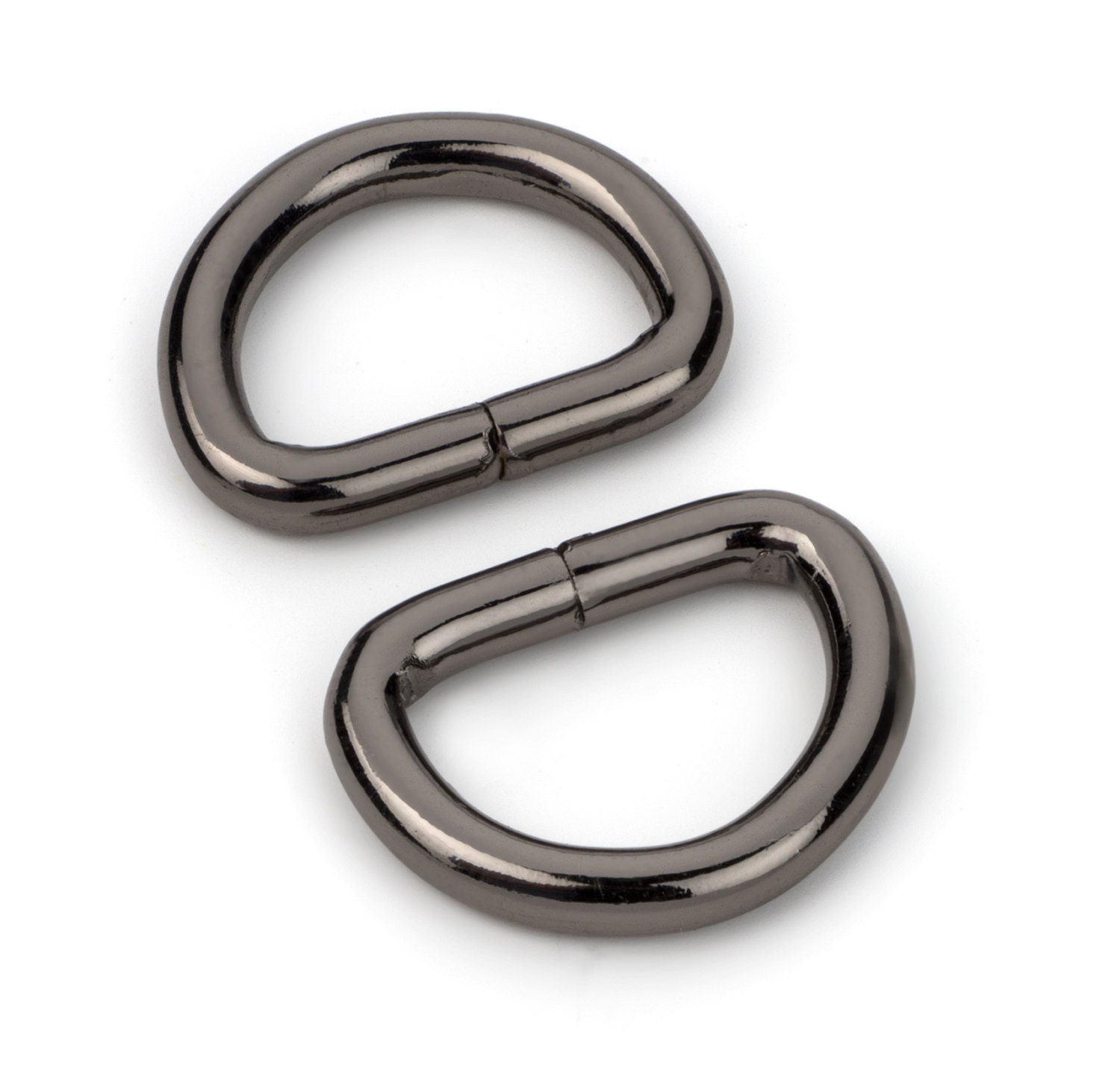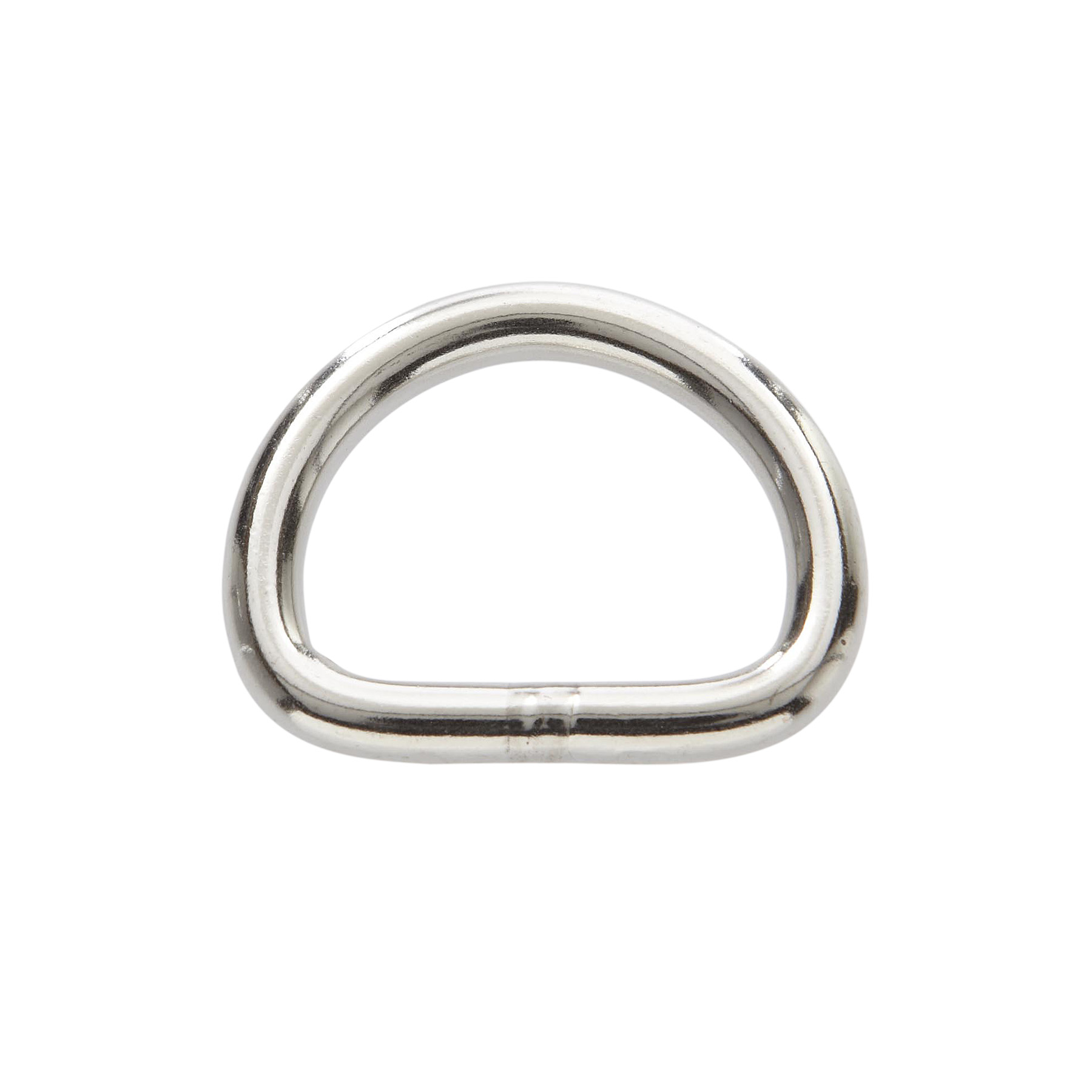What are D rings? You might be surprised to learn that these seemingly simple metal loops play a crucial role in countless objects we use every day. From backpacks and luggage to keychains and even some clothing, D rings are the unsung heroes of functionality, offering a secure and versatile way to attach, connect, and secure various items.
These rings, often made of metal or plastic, come in a variety of shapes and sizes, each designed for specific applications. Whether you’re a construction worker using D rings to secure heavy loads or a fashion designer incorporating them into a stylish handbag, understanding the versatility and benefits of these humble rings is essential.
What are D Rings?

D rings are simple yet versatile metal loops shaped like the letter “D”. They are commonly used in various applications, from everyday items to industrial equipment.
Purpose of D Rings
D rings are primarily designed for attaching and securing items. They offer a secure and convenient way to connect objects, providing a stable point for fastening straps, chains, or other accessories. Their unique shape allows for easy attachment and removal of items, making them a popular choice for various applications.
Common Uses of D Rings
D rings are widely used in various industries and applications. Here are some common examples:
- Bags and Backpacks: D rings are frequently used on bags and backpacks for attaching straps, handles, or other accessories. They allow for customization and added functionality, such as attaching water bottles, keys, or other items.
- Keychains: D rings are a common feature on keychains, providing a secure and convenient way to attach keys to a belt loop or bag.
- Hardware and Construction: D rings are used in various hardware and construction applications, such as attaching cables, securing loads, or providing anchor points for ropes or chains.
- Jewelry: D rings are used in jewelry making for attaching charms, pendants, or other decorative elements to necklaces, bracelets, or earrings.
- Clothing: D rings can be found on clothing items like belts, suspenders, and jackets for attaching accessories or adjusting the fit.
Types of D Rings

D rings are available in a wide variety of materials, sizes, and shapes to suit different applications. Understanding these variations is crucial for choosing the right D ring for your specific needs.
Materials
The material of a D ring significantly influences its strength, durability, and suitability for different applications. Here are some common materials used for D rings:
- Metal: Metal D rings are the most common type due to their strength and durability. They are typically made from steel, aluminum, or brass, each offering distinct advantages. Steel D rings are the strongest and most resistant to wear and tear, making them suitable for heavy-duty applications. Aluminum D rings are lighter and more corrosion-resistant, making them ideal for outdoor use.
Brass D rings offer a classic look and are often used in decorative applications.
- Plastic: Plastic D rings are lightweight, affordable, and corrosion-resistant, making them suitable for various applications, including clothing, bags, and toys. However, they are not as strong as metal D rings and may not be suitable for heavy-duty applications.
- Leather: Leather D rings are primarily used in decorative applications and are often found on belts, bags, and other leather goods. They offer a unique aesthetic and are durable, but they are not as strong as metal or plastic D rings.
Sizes and Shapes
D rings are available in various sizes, typically measured in inches or millimeters. The size of the D ring is determined by the diameter of the ring, which is the distance across the center of the ring. The size of the D ring is important to consider when choosing one for a specific application. For example, a larger D ring is needed for a heavier load or a thicker strap.
D rings also come in different shapes, including:
- Standard D ring: This is the most common type of D ring and has a simple, rounded shape.
- Double D ring: This type of D ring has two loops, which can be used to attach two straps or items.
- Swivel D ring: This type of D ring can rotate, which is useful for applications where the strap or item needs to be able to turn freely.
- Square D ring: This type of D ring has a square shape and is often used for applications where a more secure attachment is required.
Specialized D Rings, What are d rings
Some D rings are designed for specific applications, such as:
- Key rings: Key rings are small D rings that are used to attach keys to a keychain. They are typically made from metal or plastic.
- Dog leash D rings: Dog leash D rings are larger D rings that are used to attach a dog leash to a collar or harness. They are typically made from metal and are designed to be strong and durable.
- Luggage D rings: Luggage D rings are used to attach luggage tags or other accessories to luggage. They are typically made from metal and are designed to be resistant to wear and tear.
D Rings in Different Industries: What Are D Rings

D rings, though seemingly simple, play a crucial role in various industries, contributing to functionality, safety, and aesthetics. They are versatile components that find applications in construction, manufacturing, fashion, and numerous other sectors.
D Rings in Construction
D rings find extensive use in the construction industry, primarily for securing and attaching heavy loads. They are essential components in various applications, including:
- Scaffolding: D rings are integral to scaffolding systems, providing secure attachment points for scaffolding planks, ensuring stability and safety for workers.
- Hoisting and Lifting: In construction, D rings are incorporated into slings and chains used for lifting and moving heavy equipment and materials. They provide robust attachment points for secure lifting operations.
- Structural Support: D rings are used in structural applications, such as attaching cables and wires to beams or columns for reinforcing and supporting structures.
Advantages of Using D Rings
D rings, with their simple yet robust design, offer a multitude of advantages across various applications. Their strength, versatility, and cost-effectiveness make them a preferred choice for countless industries.
Durability and Strength of D Rings
The strength and durability of D rings are key factors contributing to their widespread use. They are typically made from high-quality materials such as steel, aluminum, or plastic, each offering unique properties.
- Steel D Rings: These are known for their exceptional strength and resistance to wear and tear. They are often used in heavy-duty applications where durability is paramount, such as in construction, marine, and industrial settings.
- Aluminum D Rings: Offering a good balance of strength and lightweight properties, aluminum D rings are commonly used in applications where weight is a concern, such as in luggage, backpacks, and sporting goods.
- Plastic D Rings: These are lightweight and cost-effective, making them ideal for applications where high strength is not a primary requirement, such as in clothing, accessories, and crafts.
Versatility and Adaptability of D Rings
The versatility of D rings stems from their ability to be used in a wide range of applications and their adaptability to different configurations.
- Attachment Points: D rings serve as reliable attachment points for various items, including straps, chains, ropes, and other hardware. This allows for easy connection and disconnection of components, facilitating quick adjustments and modifications.
- Load Distribution: The shape of a D ring distributes load evenly across the attachment point, reducing stress and preventing premature failure. This is crucial in applications involving heavy loads or repetitive stress.
- Customizable Designs: D rings are available in various sizes, shapes, and finishes, allowing for customization to specific needs and aesthetic preferences. This ensures a perfect fit and seamless integration into different designs.
Cost-Effectiveness of Using D Rings
D rings are generally cost-effective, especially considering their durability and longevity.
- Long-Term Value: The robust construction of D rings ensures they can withstand repeated use and harsh conditions, minimizing the need for frequent replacements. This translates to significant cost savings over time.
- Wide Availability: D rings are widely available in various sizes and materials, making them readily accessible and affordable. This ensures easy sourcing and procurement, further contributing to cost-effectiveness.
D Rings and Safety
D rings, though seemingly simple components, play a crucial role in ensuring safety in various applications. Their design, material, and proper installation directly impact the security and reliability of the systems they are used in. It is essential to understand the safety considerations involved in using D rings and to prioritize the selection of appropriate D rings for specific applications.
Choosing the Right D Ring for the Application
Selecting the right D ring for a specific application is crucial for safety. This involves considering the following factors:
- Load Capacity: D rings are designed to withstand specific loads. It is vital to choose a D ring with a load capacity that exceeds the anticipated load it will bear. Overloading a D ring can lead to failure, potentially causing accidents or injuries.
- Material: D rings are made from various materials, each with unique properties. For example, stainless steel D rings offer high strength and corrosion resistance, making them suitable for outdoor applications or environments with corrosive elements.
- Size and Shape: The size and shape of the D ring are essential for compatibility with the equipment or system it will be used with. A D ring that is too small or large can create compatibility issues and compromise safety.
- Application: The specific application of the D ring dictates the necessary safety features. For instance, D rings used in lifting applications might require additional safety features like a locking mechanism to prevent accidental release.
Installing and Maintaining D Rings
Proper installation and maintenance of D rings are critical for ensuring their long-term safety and performance. Here are some key recommendations:
- Installation: D rings should be installed according to the manufacturer’s instructions and using appropriate tools and techniques. Proper installation ensures that the D ring is securely fastened and can withstand the intended load.
- Inspection: Regular inspection of D rings is essential to identify any signs of wear, damage, or corrosion. Regular inspections help prevent potential safety hazards.
- Maintenance: D rings should be maintained according to the manufacturer’s guidelines. This may involve cleaning, lubrication, or other maintenance procedures to ensure their continued functionality and safety.
D Rings in Safety-Critical Applications
D rings find widespread use in various industries where safety is paramount, such as:
- Construction: D rings are used in construction equipment, scaffolding, and other applications to secure loads and ensure worker safety.
- Marine: D rings are essential in marine applications, where they are used in mooring systems, boat rigging, and life jackets.
- Aviation: D rings are used in aircraft interiors, cargo systems, and safety equipment to ensure secure attachment and safe operation.
- Automotive: D rings are used in automotive applications, such as securing cargo and towing vehicles.
D Rings in Everyday Life
D rings, often overlooked, are ubiquitous in everyday objects, silently enhancing their functionality and making our lives easier. They are simple yet versatile components that contribute to the secure attachment of straps, chains, or other accessories, enabling us to carry, organize, and utilize our belongings efficiently.
Examples of D Rings in Everyday Objects
D rings are found in a wide range of everyday objects, often discreetly performing essential tasks. Here are some common examples:
- Backpacks: D rings on backpacks serve as attachment points for straps, allowing for adjustments to fit different body sizes and carrying styles. They can also be used to secure additional accessories, such as water bottle holders or keychains.
- Luggage: D rings on luggage facilitate the attachment of luggage tags, allowing for easy identification and retrieval. They can also be used to secure straps for additional luggage or for carrying personal items.
- Keychains: D rings on keychains provide a secure and convenient way to attach keys, allowing for easy access and preventing them from getting lost. They can also be used to attach other small items, such as flash drives or bottle openers.
- Dog Leashes: D rings on dog leashes serve as attachment points for the leash and the collar, ensuring a secure connection between the dog and the owner. They can also be used to attach additional accessories, such as poop bags or training aids.
- Tents: D rings on tents are crucial for attaching guy lines, which help to stabilize the tent structure and provide additional support in windy conditions.
Functionality of D Rings in Everyday Objects
D rings are often used to:
- Attach straps, chains, or other accessories: D rings provide a secure and convenient way to attach straps, chains, or other accessories, ensuring that they stay in place and do not come loose.
- Adjust the size or fit of objects: D rings can be used to adjust the size or fit of objects, such as backpacks, luggage, and dog leashes, to accommodate different needs and preferences.
- Secure objects: D rings can be used to secure objects, such as keys, wallets, or other small items, preventing them from getting lost or damaged.
- Provide additional support: D rings can be used to provide additional support to objects, such as tents, by attaching guy lines or other reinforcement elements.
Impact of D Rings on Daily Lives
D rings have a significant impact on our daily lives, making them more convenient and efficient. They allow us to:
- Carry and transport belongings safely and securely: D rings ensure that our belongings are securely attached to our backpacks, luggage, or other carriers, preventing them from falling or getting lost.
- Organize and manage our belongings effectively: D rings allow us to organize and manage our belongings effectively, by providing a convenient way to attach and secure various items.
- Enhance the functionality of everyday objects: D rings enhance the functionality of everyday objects, such as backpacks, luggage, and keychains, by providing additional attachment points and adjustable features.
- Increase safety and security: D rings can be used to secure items that are important for safety and security, such as dog leashes or tents, ensuring that they are properly attached and functioning correctly.
D rings are more than just simple loops – they are essential components that enhance the functionality and durability of countless everyday objects. From their role in securing heavy loads in construction to adding a touch of style and practicality to our favorite accessories, D rings are a testament to the power of simple design and innovation. So, the next time you encounter a D ring, take a moment to appreciate its often overlooked yet crucial role in our daily lives.
Question Bank
What are D rings made of?
D rings are typically made of metal, such as steel, aluminum, or brass. They can also be made of plastic, depending on the intended use.
Where can I find D rings?
You can find D rings at hardware stores, craft stores, online retailers, and even some department stores.
What are D rings used for in fashion?
D rings are often used in fashion to attach straps, handles, and other accessories to bags, belts, and clothing.
How do I choose the right D ring for my project?
Consider the weight of the items you’ll be attaching, the size and shape of the D ring, and the material it’s made of.